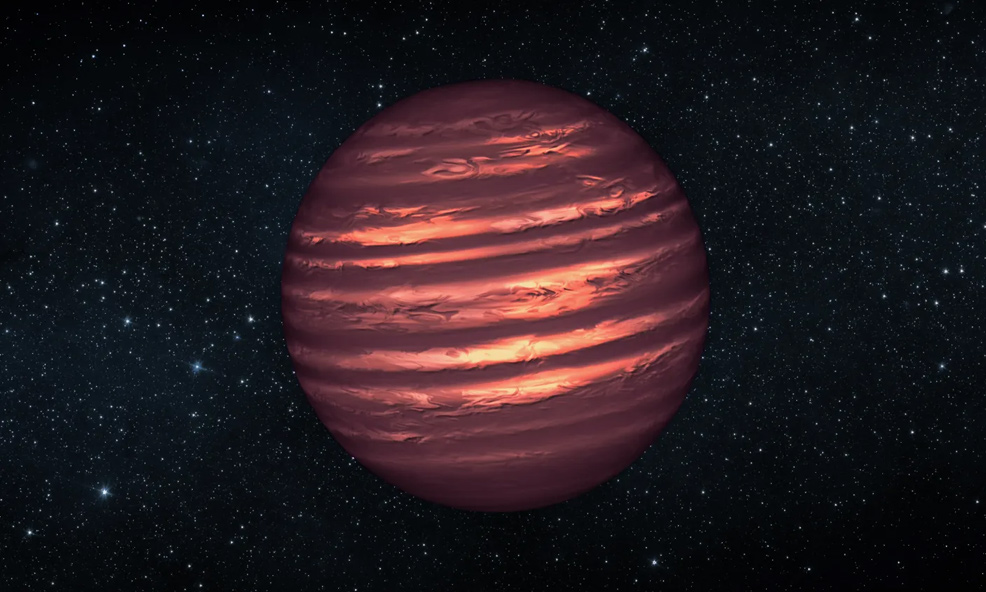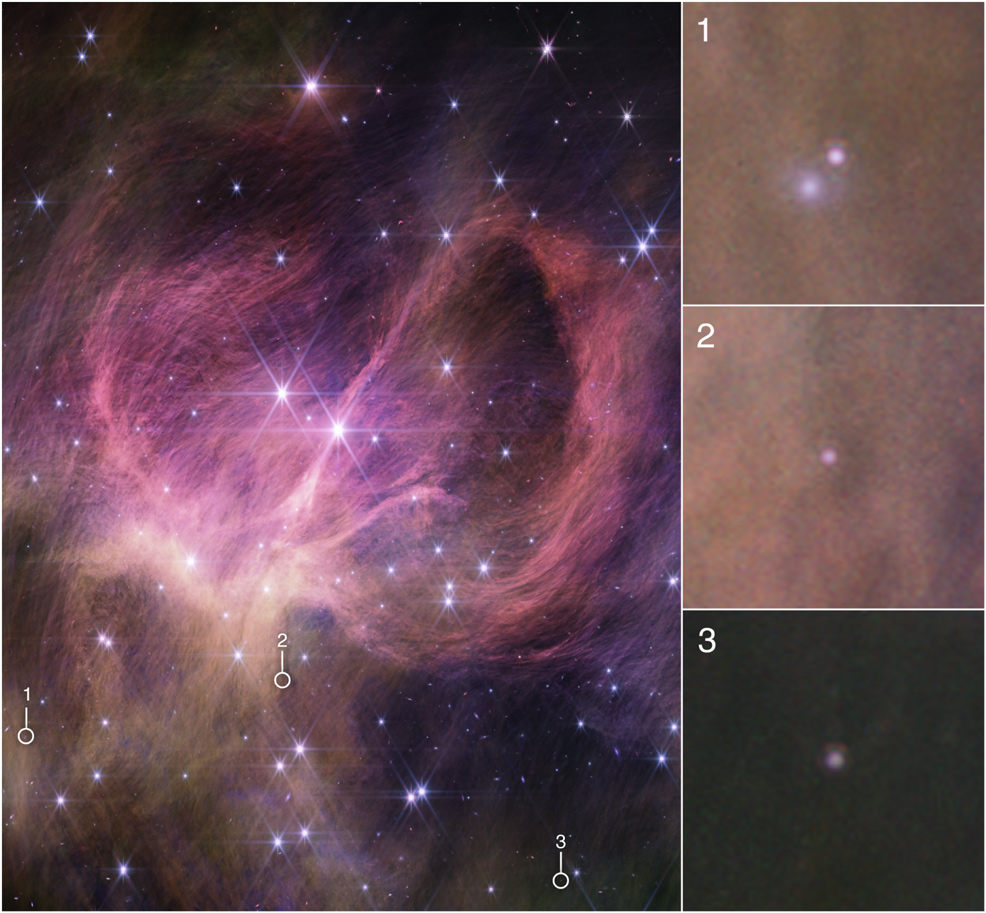
23rd December 2023 Smallest known brown dwarf spotted by James Webb The smallest known brown dwarf, weighing just three to four times the mass of Jupiter, has been discovered about 1,000 light years away by astronomers using the James Webb Space Telescope. 2023 was a memorable year for astronomy, with a deluge of discoveries made by observatories both in space and on the ground. This month, an intriguing new find has been announced by NASA, once again demonstrating the incredible capabilities of the James Webb Space Telescope (JWST), launched in 2021 as the successor to Hubble. The object in question is a particularly tiny brown dwarf. Also known as "failed stars", brown dwarfs are formed like stars through gravitational collapse but never gain quite enough density to ignite hydrogen-hydrogen fusion. They can, however, emit some light and heat from the fusion of deuterium – one of two stable isotopes of hydrogen – or the fusion of lithium in the case of larger brown dwarfs.
Brown dwarfs typically range from 13 to 80 times the mass of Jupiter. The smallest and lightest can overlap in mass with giant planets. A team used the JWST to observe star cluster IC 348, located 1,028 light-years away in the Perseus star-forming region. At only five million years old, this group is extremely young in astronomical terms. As a result, any brown dwarfs would still be relatively bright in infrared light, glowing from the heat of their formation. Webb's infrared sensitivity proved crucial, allowing the detection of objects too faint for ground-based telescopes. In addition, its sharp vision enabled the scientists to determine which red objects were pinpoint brown dwarfs and which were distant background galaxies. Their search led to three intriguing targets, with surface temperatures ranging from 830 to 1,500 °C (1,500 to 2,700 °F). For comparison, our Sun has a surface temperature of 5,500 °C (9,900 °F). The smallest of these brown dwarfs is just three to four times the mass of Jupiter (MJ), according to models, while the largest is around 8 MJ.
Explaining how such a tiny brown dwarf could form is theoretically challenging. A heavy and dense cloud of gas has plenty of gravity to collapse and form a star. However, because of its weaker gravity, it should be more difficult for a small cloud to collapse to form a brown dwarf, and that is especially true for brown dwarfs with the masses of giant planets. "It is pretty easy for current models to make giant planets in a disk around a star," explained Catarina Alves de Oliveira, principal investigator. "But in this cluster, it would be unlikely this object formed in a disk – instead forming like a star – and three Jupiter masses is 300 times smaller than our Sun. So we have to ask, how does the star formation process operate at such very, very small masses?" Since the three objects are well within the mass range of giant planets, it raises the question of whether they are actually brown dwarfs, or if they are really rogue planets ejected from planetary systems. While the team do not rule out the latter possibility, they argue that they are far more likely to be brown dwarfs than ejected planets. "Based on its luminosity and evolutionary models, the faintest new member of IC 348 is a strong contender for the least massive free-floating brown dwarf that has been directly imaged to date," they state in their paper, which is published this month in The Astronomical Journal. The discovery of more such objects will help clarify their status. Theories suggest that rogue planets are more likely to be lurking in the outskirts of a star cluster, so expanding the search area may identify them if they exist within IC 348. Future work may also include longer surveys that can detect even fainter and smaller objects. The short survey conducted by the team had been predicted to find objects as small as twice the mass of Jupiter. They believe that longer surveys could reach as low as one Jupiter mass.
Comments »
If you enjoyed this article, please consider sharing it:
|








